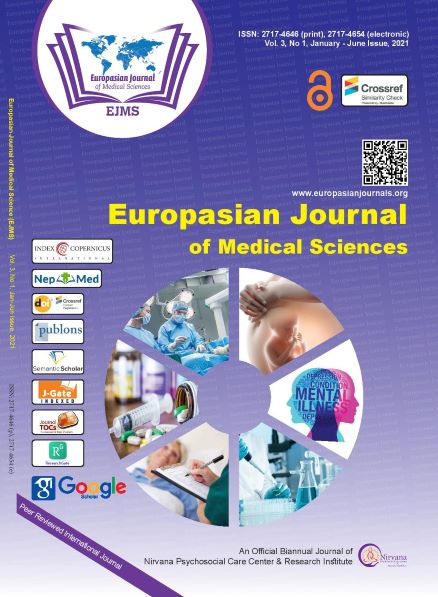COVID-19 Course of Infection and Disease
Abstract
Dear Editor,
COVID-19 course of infection and disease. World Health organization declared COVID-19, a global pandemic
on March 11, 2020. This has had far reaching impact on lives of the people, health care systems, community and
economy of all countries worldwide. COVID-19 is a multisystem disorder primarily affecting the lungs transmitted
mainly through droplet infection. 1 The estimated range of incubation period for COVID-19 is 2-14 days from the
time of exposure, with a median incubation period of 4 to 5 day’s. 2-3
Based on the severity of illness, adults with COVID-19 are grouped into five categories, even though the criteria
in each category may overlap; asymptomatic/pre-symptomatic infection, mild illness, moderate illness, severe
illness and critical illness. 3 As per Center for Disease Control and Prevention (CDC) USA, around one third of
the patients infected with COVID-19 may remain asymptomatic but can transmit the disease while among the
symptomatic, around 80% develop mild to moderate disease, while 15% develop severe lower respiratory tract
infection, 3-5% develop critical illness and 0.5-1% of patients die. 4
Frequently cited estimate is that most people recover from ‘mild’ infections within two weeks and more serious
disease within three weeks. 3 Patients who had recovered from COVID-19, majority reported the persistence of
one or more symptoms, particularly fatigue and dyspnea. 4
Various names have been given to these post recovery presentations such as “Long Covid” or “Long Haul Covid”
“Ongoing Covid19”. It is yet to be proven whether the symptoms of all of these people are due to the same
phenomenon or any other explanation for these presentations is there.
Copyright (c) 2021 Authors

This work is licensed under a Creative Commons Attribution 4.0 International License.
All articles published in EJMS are licensed under the Creative Commons Attribution 4.0 International License (CC-BY 4.0). The author/s as the copyright holder will retain the ownership of the copyrights without restrictions for their content under the CC-BY 4.0 license, and allow others to copy, use, print, share, modify, and distribute the content of the article even in commercial purpose as long as the original authors and the journal are properly cited. No permission is required from the author/s or the publishers. Appropriate attribution can be provided by simply citing the original article.
On behalf of all the authors, the corresponding author is responsible for completing and returning the agreement form to the editorial office. More information about the terms and conditions, privacy policies, and copyrights can be found on the webpage of the Creative Commons license privacy policy. https://creativecommons.org/licenses/by/4.0/




